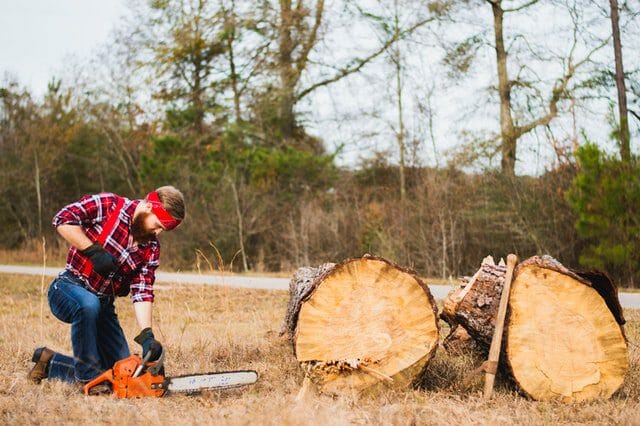Trees are an important part of nature, and they provide many benefits. They help clean the air, beautify our environments, and provide shade. However, sometimes trees may need to be cut down for several reasons. For instance, they may be diseased or damaged, they may be in the way of development, or they may need to be removed for safety reasons.

We’re going to look at steps to safely cut down a tree. But first, you need to buy the best chainsaw you can get, especially if you want to cut several trees.
Steps to Felling Trees Safely
Assess the Site
Start by thoroughly inspecting the area. Assess the tree’s height and ensure that there are no structures, pets, electrical boxes, heavy growth, or power lines within a radius equal to this height. If there are any obstructions, plan to have them removed. Alternatively, you can call in an expert to guide you on the next steps. But if the area is clear, you can move to the second step.
Gather your Equipment
The most important equipment is your safety gear. When felling trees, safety is always a primary concern. Thus, you need to get the right gear before taking on any chainsaw work. In essence, get a logger’s helmet to protect your head from injuries caused by falling branches. On the other hand, safety glasses will help protect your eyes from specs. A face screen and earmuffs will also protect your face and ears, while Kevlar chaps will protect your leg from anything dropping on them. Gloves will also help prevent blisters.
Other than the safety gear, you will need the equipment to do the job. You will need a chainsaw powerful enough to cut the target tree. Also, you need to ensure that your chainsaw battery and charger are ready. You will also need felling wedges. These wedges will prevent your saw from imminent pinches when cutting trees.

Try to Estimate the Fall
Determining the exact size of the tree might be challenging. But it is always important to remember that trees are always taller than you think. The ax handle trick comes in handy as it can help easily approximate the tree’s height. This technique works by holding an ax handle at arm’s length and moving some distance away or towards the tree. With one eye closed, check to see that the treetop is even with the ax top while the base is in line with the ax’s bottom. The position of your feet at the point where they align is about where the treetop. It is important to remember that this is just an estimation, so you will need to allow additional room.
Also, it is crucial to consider factors such as disease or overcrowding, which may cause uneven growth of the tree. Besides, a tree will always fall on its heavier side even if you attempt to redirect the fall.
Plan and Clear Your Escape Route
Estimating the size and fall of the tree does not automatically mean that you are ready to start cutting the tree. You will need to spend extra time planning and clearing your escape route. As a rule of thumb, you should have two escape routes, both at a 45-degree angle away from each other in the opposite direction of the fall.
After planning the retreat route, you now need to clear the area. You do not want to trip on anything as you are trying to escape. Therefore, you must take the time to clear the safety paths off any debris.
Plan and Cut the Notch
A tree will always fall in the direction of the notch. Therefore, the proper indentation should be on the heavier side of the tree and should be about one-fifth of the trunk’s diameter. But the incision must be at a height you can comfortably reach.
When cutting the notch, you need first to make the top cut, followed by the bottom indentation. You will need to adjust your hand to control the chainsaw from the throttle using your thumb. Meeting the top cut will mean that your wedge falls from the notch. However, you will need to extend both incisions to free up the wedge in most cases.
The Final Cut
For the final cut, score a line that will connect the apex of the notch on both sides. The back cut and the pinnacle should be parallel. Once this is achieved, you can now make the final felling cut. Be sure to stop once you notice that the tree has begun to lean. At this juncture, pull out the chainsaw and set the chain brake. Next, start to walk on the retreat routes you earlier created while keeping an eye on the tree so that you can promptly react if the tree falls in the unintended direction.
Whether you’re in the tree cutting business or want to cut trees on your property, these are some of the tips you need to keep in mind. Tree cutting can be pretty easy if you have the right equipment and can go about it safely.
